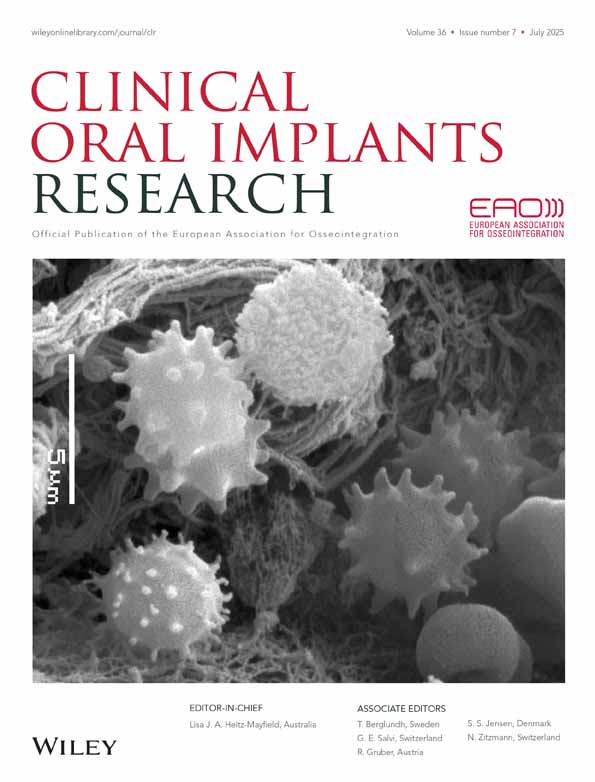An in vitro study on compensation of mismatch of screw versus cement-retained implant supported fixed prostheses
Abstract
In common practice a perfect fit of the prosthetic framework with the implant abutments is almost impossible to achieve. The mismatch, which is principally induced by the technological process adopted to manufacture the fixed prostheses, strains the framework thus generating constraint reactions. These are static forces that load the implant components and the bone at the implant–bone interface and may cause the bone remodelling. Depending on the magnitude of such forces, i.e. depending on the magnitude of the mismatch, the bone remodelling may lead to the loosening of the screws and of the implant–bone interface and hence cause implant failure. The present study shows an in vitro comparison of 3 different connecting abutments (standard, EsthetiCone and CerAdapt, Nobel Biocare AB, Göteborg, Sweden) with relation to the mechanical stresses induced by geometrical mismatches (technology induced errors). Two experimental devices were purposely realized and used to assess the ability of the different abutments to compensate errors. One was designed for translation errors and the other for rotation errors. The experimental apparatus set-up includes 2 freestanding implants supporting a prosthetic structure and the connecting abutments. The implants and the abutments were used as delivered by the manufacturer, while the prostheses were purposely realized and instrumented with strain gauges. The data obtained with the error devices do not give quantitative information on what happens in clinical applications where the implants are connected to living bone, which is a tissue much more deformable than the steel used for the error devices. Results allow direct comparisons of the behaviour of the different investigated abutments with respect to position errors. The CerAdapt system (cement retained ceramic abutments) showed the least strain in presence of translation errors. The standard system (screw retained abutments) showed the least strain in presence of rotation errors.




